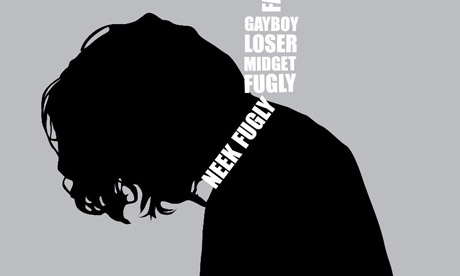Bullying and suicide among youth is a public health problem
Recent studies linking bullying and depression, coupled with extensive media coverage of bullying-related suicide among young people, led the Centers for Disease Control and Prevention (CDC) to assemble an expert panel to focus on these issues. This panel synthesized the latest research about the complex relationship between youth involvement in bullying and suicide-related behaviors. Three themes emerged: 1) Bullying among youth is a significant public health problem, with widespread and often harmful results; 2) There is a strong association between bullying and suicide-related behaviors; and 3) Public health strategies can be applied to prevent bullying and suicide.
A special supplement of the Journal of Adolescent Health presents the panel’s findings, introduced by an insightful editorial by Marci Feldman Hertz, MS, Centers for Disease Control and Prevention, Atlanta, Georgia, and Ingrid Donato and James Wright, MS, LCPC, Center for Mental Health Services, Substance Abuse and Mental Health Services Administration, Rockville, Maryland.
Between 20 and 56 percent of young people are involved in bullying annually, as either a victim or perpetrator, or both. While bullying situations vary by type, age, and duration, middle school-aged children are more likely to be involved in bullying than those in high school. Verbal bullying occurs more frequently than physical or cyber-bullying and is more likely to happen over a longer time period. Further, lesbian and gay youth are more likely to be victimized than heterosexuals.
Poor mental and physical health among the victims and perpetrators of bullying, and those who experience both victimization and perpetration, investigators say, contribute to the problem. Further, involvement in bullying can have long-lasting, harmful effects, such as depression, anxiety, abdominal pain, and tension, months or even years later, as reported by two studies in this special supplement.
Researchers demonstrate a strong link between involvement in bullying and suicide. Dorothy Espelage and Melissa K. Holt, authors of “Suicidal Ideation and School Bullying Experiences After Controlling for Depression and Delinquency,” show that the idea of suicide and attempts at suicide among middle school students were three-to-five times greater than among uninvolved students.
By applying public health strategies, researchers assert that bullying can be prevented, improving health and mental outcomes for many youth. Articles such as “Suicidal Thinking and Behavior Among Youth Involved in Verbal and Social Bullying: Risk and Protective Factors,” by Iris Wagman Borowsky, Lindsay A. Taliaferro, and Barbara J. McMorris, reinforce the call for an integrated approach of multiple strategies to prevent suicide by focusing on shared risk and protective factors, including individual coping skills, family and school social support, and supportive school environments.
Bullying is recognized as a major public health problem in the Western world, and it appears to have devastating consequences. Cyberbullying has become an increasing public concern in light of recent cases associated with youth suicides that have been reported in the mass media.
 Most of the studies that have examined the association between bullying and suicidality have been cross-sectional. Those studies show that bullying behavior in youth is associated with depression, suicidal ideation, and suicide attempts. These associations have been found in elementary school, middle school, and high school students. Moreover, victims of bullying consistently exhibit more depressive symptoms than nonvictims; they have high levels of suicidal ideation and are more likely to attempt suicide than nonvictims.
Most of the studies that have examined the association between bullying and suicidality have been cross-sectional. Those studies show that bullying behavior in youth is associated with depression, suicidal ideation, and suicide attempts. These associations have been found in elementary school, middle school, and high school students. Moreover, victims of bullying consistently exhibit more depressive symptoms than nonvictims; they have high levels of suicidal ideation and are more likely to attempt suicide than nonvictims.
The results pertaining to bullies are less consistent. Some studies show an association with depression, while others do not. The prevalence of suicidal ideation is higher in bullies than in persons not involved in bullying behavior. Studies among middle school and high school students show an increased risk of suicidal behavior among bullies and victims. Both perpetrators and victims are at the highest risk for suicidal ideation and behavior.
Notes the supplement’s guest editor, Marci Feldman Hertz, “Given the prevalence and impact of bullying, it is important to move forward while public health strategies are still being developed. We can begin by implementing and evaluating strategies that have demonstrated effectiveness at increasing protective factors and decreasing risk factors associated with both bullying and suicide.” Education and health stakeholders, she adds, should consider broadening their focus beyond just providing services to those already involved in bullying or suicide-related behaviors. They should also implement strategies to prevent bullying and suicide behavior from occurring in the first place.
In recent years, a series of bullying-related suicides in the US and across the globe have drawn attention to the connection between bullying and suicide. Though too many adults still see bullying as “just part of being a kid,” it is a serious problem that leads to many negative effects for victims, including suicide. Many people may not realize that there is also a link between being a bully and committing suicide.
The statistics on bullying and suicide are alarming:
Suicide is the third leading cause of death among young people, resulting in about 4,400 deaths per year, according to the CDC. For every suicide among young people, there are at least 100 suicide attempts. Over 14 percent of high school students have considered suicide, and almost 7 percent have attempted it.
Bully victims are between 2 to 9 times more likely to consider suicide than non-victims, according to studies by Yale University
A study in Britain found that at least half of suicides among young people are related to bullying
10 to 14 year old girls may be at even higher risk for suicide, according to the study above
According to statistics reported by ABC News, nearly 30 percent of students are either bullies or victims of bullying, and 160,000 kids stay home from school every day because of fear of bullying
 Bully-related suicide can be connected to any type of bullying, including physical bullying, emotional bullying, cyberbullying, and sexting, or circulating suggestive or nude photos or messages about a person.
Bully-related suicide can be connected to any type of bullying, including physical bullying, emotional bullying, cyberbullying, and sexting, or circulating suggestive or nude photos or messages about a person.
Some schools or regions have more serious problems with bullying and suicide related to bullying. This may be due to an excessive problem with bullying at the school. It could also be related to the tendency of students who are exposed to suicide to consider suicide themselves.
###
Eileen Leahy
.(JavaScript must be enabled to view this email address)
732-238-3628
Elsevier Health Sciences